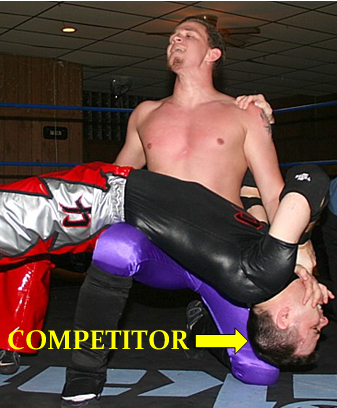I stumbled upon an article this week posted by Ross Hudgens that discusses the 10,000 Hour Rule. For those of you who are unfamiliar, psychologist K. Anders Ericsson proposed the idea (based on his research) that it takes about 10,000 hours of practice in any particular field or activity to become an expert. Whether you agree or disagree with the theory, the underlying principle holds true- the only way to master your craft is by devoting serious man-hours (or woman-hours) towards developing your skill set. You dont have to be a genius to become an expert; you just have to be consistent.
I thought about the 10,000 Hour Rule this week as I sat in our SEO meeting watching Wil explain how he evaluates client projects using his gut. No, he was not referring to his rippled 6-pack that hes developed from countless sit-ups and trunk twists in the gym downstairs; he was referring to his ability to spot trends and patterns in data that most of us newbies are unable to detect. Ive seen Wil attack a 10-page competitor analytics report with the same zeal as a mad scientist on the brink of discovering plutonium. Wil can quickly recognize trends that others cant- not just because hes really smart- but because hes been doing SEO since the Old Navy Tech-Vest boom of 1999.
It's still a good look in 2011, in my opinion...

The longer I work on link-building, the more I realize the importance of recognizing patterns and trends in my research in order to find opportunities that scale. In my first couple of months at SEER, I would be pretty pumped if I found a high authority, PR 6 .edu page that was a perfect fit for one of our projects. Today, I would still be excited if I found the same opportunity, but I would take the extra step to see if I could locate a common thread in similar .edu pages in order to generate a query that could open the door for several other clients as well. Below, I am going to highlight a couple of very simple ways that identifying patterns in research can lead to scalable opportunities that can be implemented across multiple projects.
Finding Guest Post Opportunities on the Backs of Competitors
Image Source: chikarapro.com
Recently, I was doing some research to find guest post opportunities for our client that sells contact lenses. I used the query intitle:contact lenses OR contacts OR glasses OR eye care + guest post OR guest author and came across 7 or 8 really solid results. One thing that I quickly noticed was that a few of these results were from the same competitor and they were doing something that was pretty creative. They were writing guest posts on all different kinds of blogs-from parenting blogs to legal blogs- and just finding a way to incorporate vision or eye care in their post in order to make them relevant. An example of this strategy was a guest post on a legal blog discussing the best type of eyeglasses to wear in order to look more professional in the court room.
The other thing that I noticed was that the author byline at the end of each guest post was exactly the same. It read, Jane Doe is a content contributor for CompetitorsName.com. Upon identifying the recurring byline, I simply put it in quotes and searched in Google- returning 666 unique results. Since they were posting on such a wide array of blogs, the research boiled down to about 40-50 quality blogs on several different topics that weve used to contribute content for several of our clients.
Yesterday, I was doing some research to find linking opportunities for our client that happens to be an online University located in Philadelphia. As I was digging through a competitors OSE top page report, I found that their 4th most linked to page was serving a 404 error. The broken page was for their Sacramento campus and had 150 linking root domains. I ran the broken page through OSE and found that the majority of the 150 unique linking domains had the same exact URL structure: (name of town).com/SAME-URL-STRUCTURE . I clicked around on these back-links and found that they are all part of a nationwide network of neighborhood-specific, real estate sites that are formatted the exact same way and link out to local resources.
Having identified the pattern in the URL structure, I was able to generate the following query to serve all relevant results (33,000) of town pages that were linking out to local Universities in the Philadelphia Area: inurl:SAME-URL-STRUCTURE 215 OR 610 OR 484. While we are still evaluating the overall quality of these sites (average domain authority of 25-35), they have relevant categories for just about all of our clients and submissions appear to be free.
The Take-Away
Although neither example above uncovers a ground breaking or revolutionary search tactic, they do allude to the simple beauty of spotting patterns to improve search efficiency. It doesnt take 10,000 hours (just pouring through 10,000 back-links) to realize that efficiency is the name of the game in link building. In most cases, the difference between finding one good opportunity for a client or several opportunities that scale is just identifying the pattern that leads to a more robust query.
If you have any other effective queries, strategies or ideas -or you want to know what that URL structure actually is- please feel free to connect with me on twitter @MikeSpringman.


